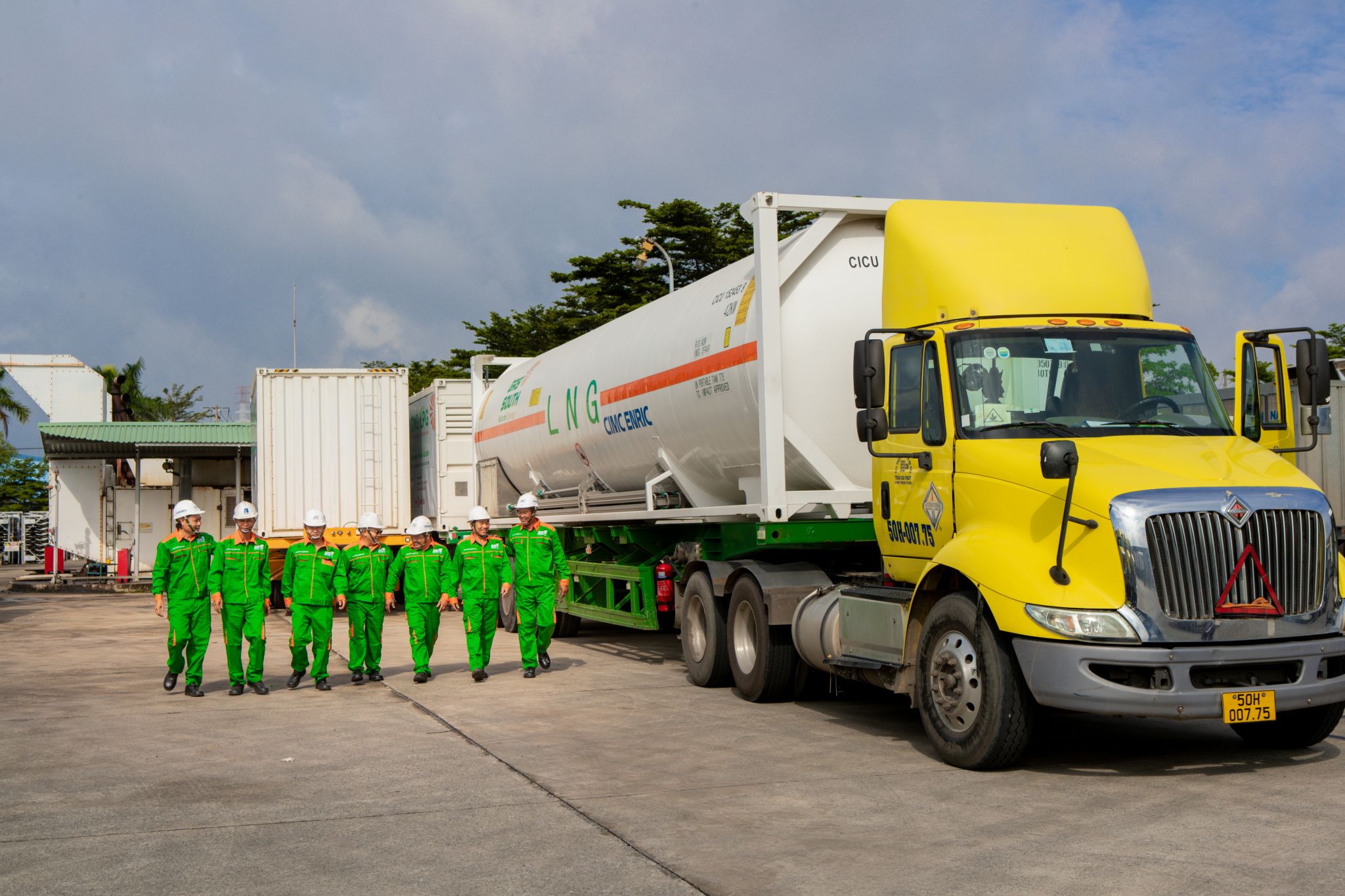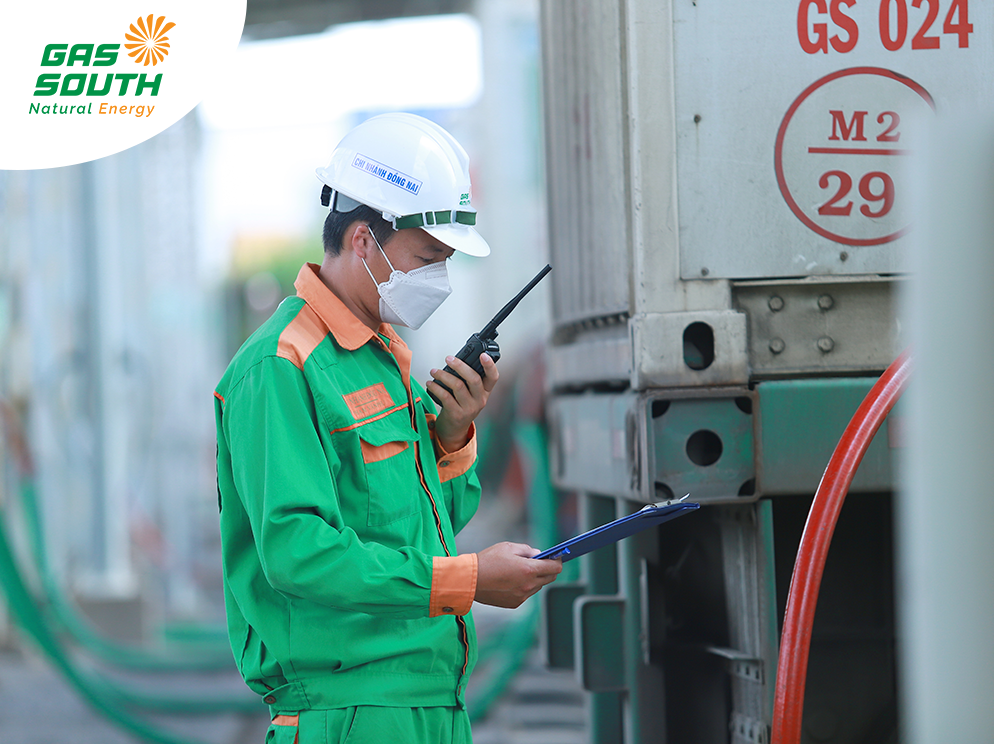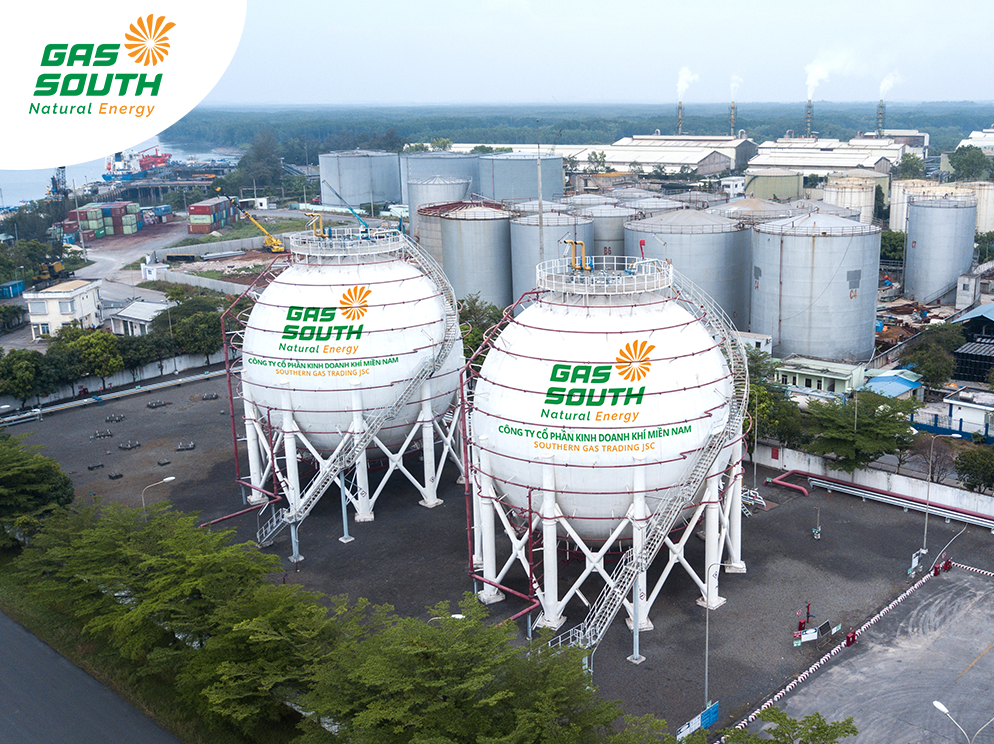Currently, environmental protection has been significantly interested , traditional fuels such as coal, gasoline, and diesel are gradually being replaced with cleaner, more environmentally friendly, commonly known as Liquefied Petroleum Gas (LPG), Compressed Natural Gas (CNG) vs Liquefied Natural Gas (LNG), . So, what are the differences between CNG, LNG, and LPG? The following information will help you understand and distinguish between CNG, LNG, and LPG.

LNG’s trailer at My Xuan Station
1. About definition
1.1. What is compress natural gas?
Natural gas is a fossil fuel composed primarily of methane (CH4), along with other hydrocarbons such as ethane, propane, butane, and traces of other gases. It is a naturally occurring gas that is often found in association with oil deposits underground. It can also be found in coal beds and as methane hydrate deposits on the ocean floor.
CNG (Compressed Natural Gas) is natural gas extracted from natural gas fields or associated gas produced during oil extraction. It is transported through pipelines to gas processing plants to remove impurities and then sent to compression stations, where it is compressed to high pressures (200-250 barg) and stored in specialized tanks.

Operator is preparing to load CNG into the bus
1.2. What is liquefied natural gas?
LNG (Liquefied Natural Gas) is natural gas that has been liquefied through deep cooling to approximately -162oC (-260oF) after being processed to remove impurities. The main component of LNG is methane (CH4), which accounts for about 95% of its composition, remaining are ethane, propane, and other substances. LNG is colorless and odorless. The volume of natural gas in its liquid state is about 600 times smaller than its volume in its gaseous state, making it very convenient for long-distance storage and transportation to the point of consumption.

LPG’s storage tanks at Go Dau Storage
1.3. What is LPG?
LPG (Liquefied Petroleum Gas) is a liquefied mixture of light hydrocarbons, with propane and butane as its main components. It is liquefied for convenient storage and transportation. LPG is produced from natural gas streams extracted from oil wells or through crude oil refining processes. LPG is colorless and odorless.
2. CNG, LNG and LPG comparison tablen comparison
The difference between compress natural gas vs liquefied natural gas and liquefied petroleum gas
|
Ordinal Numbers |
Characteristic |
LNG |
CNG |
LPG |
|
1 |
Main component |
methane |
methane |
propane và butane |
|
2 |
Density |
0,41-0,5 kg/L |
0,75-0,83 kg/Sm3 |
0,51-0,56 kg/L |
|
3 |
Heating value |
55 |
53 |
50 |
|
4 |
Safety |
LNG is lighter than air, and it disperses easily when there is a leak. |
CNG is lighter than air, and it disperses easily when there is a leak. |
LPG is heavier than air, and it tends to accumulate on the ground when there is a leak, making it highly flammable and displacing oxygen. |
|
5 |
Storage and transportation conditions |
LNG is liquefied at a temperature of -162 oC and atmospheric pressure, reducing its volume by 600 times compared to its gaseous state at Standard temperature and pressure (STP) |
CNG is compressed to a pressure of 200-250 bar, resulting in a volume reduction of approximately 200-250 times compared to its ambient temperature and pressure state. |
.LPG (Liquefied Petroleum Gas) is liquefied at low pressure, depending on the propane/butane ratio and temperature. At 38oC, LPG liquefies at a vapor pressure of approximately 12 barg. The volume of LPG in its liquid state decreases by around 250-270 times compared to its gaseous state. |
|
6 |
Storage material |
LNG is stored in multi-layered steel tanks, with an insulation layer to maintain the low temperature required to keep it in its liquefied state. These tanks are designed to withstand pressures of approximately 12 bar |
CNG is typically stored in specialized high-strength composite or steel cylinders designed to withstand pressures higher than 250 bar |
LPG is stored in steel tanks or cylinders designed to withstand pressures up to approximately 25 bar |
|
7 |
Role |
LNG is used as fuel for power generation, industrial production, transportation, shipping, and as raw materials for chemical production… |
CNG is used as fuel for industrial production, transportation, and vehicles. |
LPG is used as fuel for residential, industrial production, transportation, and vehicles. |
The benefits of using CNG, LNG, and LPG over conventional fuels include that they are cleaner and more effective, which makes them suited for industrial use. Due to ease of storage and long-distance transportation, LNG and LPG are two of them that are often traded. CNG and LNG are safer and more environmentally friendly than LPG.
3. Frequently Asked Questions About CNG, LNG and LPG
3.1. What are the benefits of using CNG, LNG and LPG?
The benefits of using CNG, LNG, and LPG over conventional fuels include that they are cleaner and more effective, which makes them suited for industrial use. Due to ease of storage and long-distance transportation, LNG and LPG are two of them that are often traded. CNG and LNG are safer and more environmentally friendly than LPG.
3.2. Is liquefied natural gas the same as propane?
Liquefied natural gas (LNG) and propane are not the same, although they are both forms of natural gas. LNG is primarily composed of methane, which is cooled to a very low temperature to convert it into a liquid state. Propane, on the other hand, is a hydrocarbon gas that is the main component of Liquefied Liquefied petroleum gas (LPG).
With the capability to simultaneously supply LNG, CNG, and LPG fuels using an open fueling method, Gas South believes it can ensure a flexible gas supply, stable quantity, competitive pricing, and optimally meet the needs of customers. Customers have the flexibility to choose from various options, including investing in equipment, transportation, and operations.





